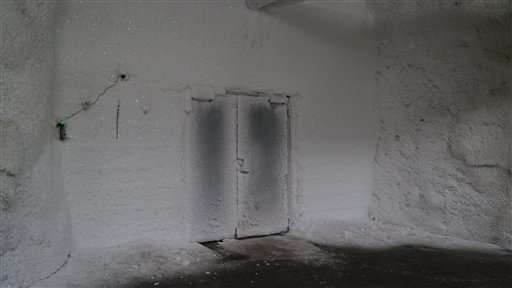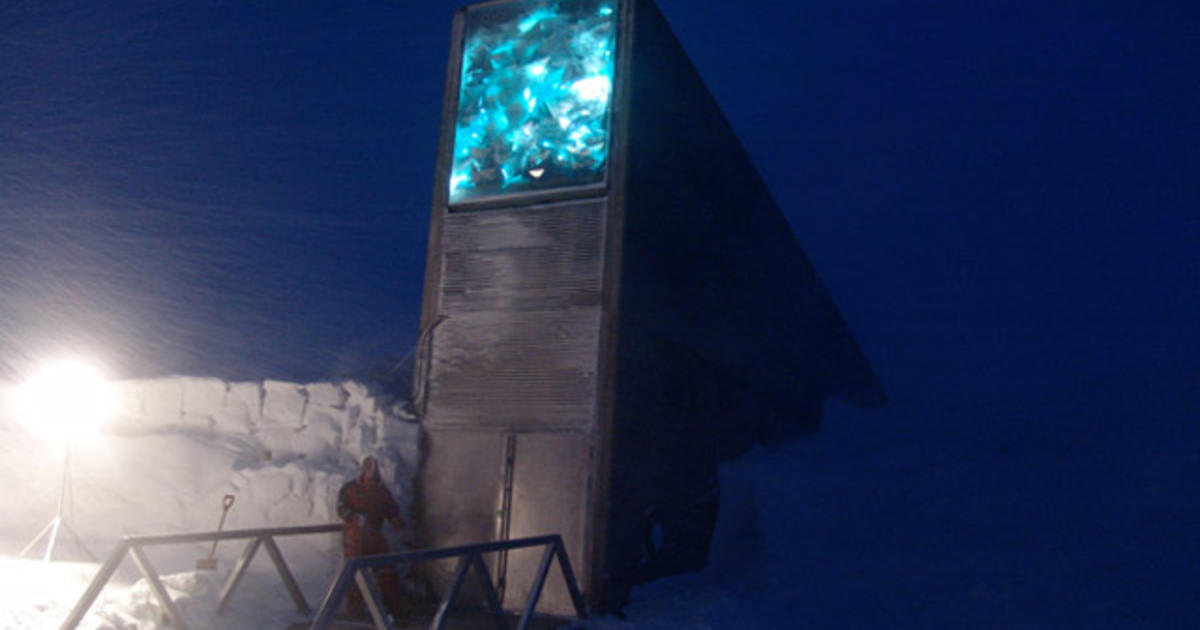

What is secured inside the vault is one of the most important global public goods we have on Earth Stefan Schmitz, the Crop TrustĪway from the panoramic view of the Arctic night from the vault’s entrance, the virtual tour takes you down a long tunnel deep into the mountain. Research into the resilience of these crops and plant species could be vital as the planet heats in the coming decades.


Photograph: NordGenĪfter the Aleppo seed bank was destroyed in the Syrian civil war, the vault was used to replenish seeds for the first time by the International Center for Agricultural Research in the Dry Areas, a regional hub based in Aleppo to study crops from the cradle of civilisation where agriculture first began. The Svalbard Global Seed Vault might look a bit like a DIY warehouse but it’s ‘one of the most important global public goods we have on Earth’. I’ve been so many times and I’m still curious.” Then you see all of the boxes with seeds from all of these countries. “When you open the door, it’s -18C – the international standard for conserving seeds – which is very, very cold. All you can hear is yourself,” says Lise Lykke Steffensen, executive director of NordGen, which is responsible for the day to day operation of the vault. It has high ceilings and when you’re standing inside the mountain, there’s hardly any sound. Scientists say they hope people will learn more about their work through the virtual tour – without running the risk of falling prey to a polar bear. The seeds could hold answers to agricultural challenges posed by climate crisis, invasive species, pests, changes in rainfall patterns and rampant biodiversity loss are studied, and it opens three times a year to accept new deposits from other seed banks around the world. Detailed information about seeds in the Vault and about who sent them can be found on this webpage.The deep-freeze, designed to last for ever, is co-managed by the Norwegian government, the Crop Trust and NordGen, the genebank of the Nordic countries. They indicated that the 200 accessions that were brought into the Seed Vault at this occasion were the starting point on a major scheme for shipping about 26,000 seed samples from NBPGR to Svalbard in the near future.Īfter the seed deposit in February 2017, the seed collection in The Svalbard Global Seed Vault comprise 930,591 seed samples, sent by 73 depositor gene banks and institutes. Jeet Singh Sandhu from the Ministry of Agriculture & Farmers Welfare in India. The seeds from the National Bureau of Plant Genetic Resources in India were taken into the Seed Vault by Dr. The other gene banks to deposit seeds at this occasion are located in India, the Netherlands, Pakistan, Bosnia & Herzegovina, Benin and USA. CIMMYT, the International Research Centre for Maize and Wheat in Mexico, shipped nearly 28,000 seed samples, and is now, with a total of more than 158,000 deposited seed accessions, the largest Seed Vault depositor, by seed sample numbers. Seven other gene banks had previously deposited seeds and shipped additional seed samples at this occasion. This marked the first seed deposit to the Seed Vault from a UK based gene bank. The National Gene Bank in Belarus deposited seeds from wheat and barley, while Gaynor McKenzie and Jane Robertson from the James Hutton Institute in Scotland delivered in personae a selection of potato seeds from their Commonwealth Potato Collection in the Vault. Later during the same week, seeds from nine other gene banks were deposited in the Seed Vault, among those two institutes depositing seeds for the first time. They also expressed their gratitude to Norway, CropTrust and NordGen for good cooperation. Abousabaa underlined the significance of the Seed Vault as a security depository for plant genetic resources and future food security. At the same time, seeds were prepared and packed for a second back-up deposit in Svalbard.Ī delegation from ICARDA, led by Chair Margret Thalwitz and Director General Aly Abousabaa accompanied NordGen staff when 15,160 plant varieties and other genotypes were re-deposited in the Seed Vault on Wednesday the 22 nd of February. During the summer of 2016, fresh seeds of a number of cereal and legume species were harvested for the re-establishment of gene bank functions in Morocco and Lebanon. A total of 38,073 seed samples were returned from Svalbard and immediately sown. In 2015, ICARDA became the first gene bank to request the withdrawal of seeds from the security seed depository in Svalbard as the war in Syria made the Aleppo gene bank inaccessible. On February 22 nd, new fresh seeds multiplied at ICARDA units in Morocco and Lebanon were re-deposited, as were seeds from nine other gene banks Seed accessions from ICARDA that were taken out in September 2015 are back in the Svalbard Global Seed Vault.


 0 kommentar(er)
0 kommentar(er)
